
The governor-general of Australia is the head of the executive branch of the federal government, serving as the representative of the Australian monarch (currently Charles III). The position came into being with the adoption of the new national constitution on 1 January 1901, and has been held by 27 people since then. Governors-general have no fixed term, but have usually served for around five years.
Background
For the first two decades after federation, governors-general were selected solely by the British government. The monarch was consulted on the decision into the 1930s. The first four governors-general were peers; Sir Ronald Munro Ferguson (appointed 1914) was the first commoner to hold the position, although he was also later elevated to the peerage. In 1920, Billy Hughes became the first prime minister to be consulted over the governor-generalship. Stanley Bruce (1925) and Joseph Lyons (1935) either asked for or were given a list of suitable candidates to choose from.
James Scullin (1930) became the first prime minister of Australia to exercise complete discretion in the appointment; his nomination of Sir Isaac Isaacs made Australia the first Dominion to have a native-born governor-general. In 1945, John Curtin nominated Prince Henry, Duke of Gloucester, to the post – the first and only royal officeholder to take up the post; however, in October 1938 Prince George, Duke of Kent had been announced as the successor to Lord Gowrie with effect from November 1939, [1] [2] but on 11 September 1939, owing to the outbreak of the Second World War, the Duke's appointment was postponed. It never eventuated, instead Lord Gowrie continued his incumbency until 1945, creating a still-unsurpassed record term of over 9 years. [3] A second Australian ( William McKell) was appointed in 1947; he was followed by three more Britons, each chosen by Sir Robert Menzies. Menzies's fourth nomination was Richard Casey, who took office in 1965; he and all subsequent governors-general have been Australian citizens. All states except South Australia and Tasmania have provided at least one appointee. The first female governor-general, Quentin Bryce, took office in 2008.
On 16 December 2018, prime minister Scott Morrison announced that the next governor-general would be General David Hurley, then- governor of New South Wales. To provide continuity through general elections both federally and in New South Wales, Hurley succeeded General Sir Peter Cosgrove, who had planned to retire in March 2019, on 1 July 2019. [4] [5]
On 3 April 2024, prime minister Anthony Albanese announced that General Hurley would be succeeded on 1 July 2024 by businesswoman Sam Mostyn, the second woman to be governor-general.
List of officeholders
| No. | Portrait | Name (Birth–Death) |
Term of office |
Monarch Reign |
Prime Minister Term of office | ||
|---|---|---|---|---|---|---|---|
| Took office | Left office | Time in office | |||||
| 1 |
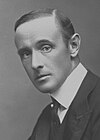
|
John Hope 7th Earl of Hopetoun KT, GCMG, GCVO, PC (1860–1908) |
1 January 1901 |
17 July 1902 [a] |
1 year, 197 days |
Victoria (1837–1901) |
Edmund Barton (1901–1903) |
|
Edward VII (1901–1910) | |||||||
| 2 |
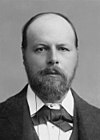
|
Hallam Tennyson 2nd Baron Tennyson GCMG, PC (1852–1928) |
9 January 1903 |
21 January 1904 |
1 year, 12 days | ||
|
Alfred Deakin (1903–1904) | |||||||
| 3 |
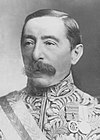
|
Henry Northcote 1st Baron Northcote GCMG, GCIE, CB (1846–1911) |
21 January 1904 |
9 September 1908 |
4 years, 232 days | ||
|
Chris Watson (1904) | |||||||
|
George Reid (1904–1905) | |||||||
|
Alfred Deakin (1905–1908) | |||||||
| 4 |

|
William Ward 2nd Earl of Dudley GCB, GCMG, GCVO, TD, PC (1867–1932) |
9 September 1908 |
31 July 1911 |
2 years, 325 days | ||
|
Andrew Fisher (1908–1909) | |||||||
|
Alfred Deakin (1909–1910) | |||||||
|
Andrew Fisher (1910–1913) | |||||||
|
George V (1910–1936) | |||||||
| 5 |
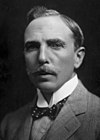
|
Thomas Denman 3rd Baron Denman GCMG, KCVO, PC (1874–1954) |
31 July 1911 |
18 May 1914 |
2 years, 291 days | ||
|
Joseph Cook (1913–1914) | |||||||
| 6 |

|
Sir Ronald Munro Ferguson GCMG, PC (1860–1934) |
18 May 1914 |
6 October 1920 |
6 years, 141 days | ||
|
Andrew Fisher (1914–1915) | |||||||
|
Billy Hughes (1915–1923) | |||||||
| 7 |

|
Henry Forster 1st Baron Forster GCMG, PC (1866–1936) |
6 October 1920 |
8 October 1925 |
5 years, 2 days | ||
|
Stanley Bruce (1923–1929) | |||||||
| 8 |

|
John Baird 1st Baron Stonehaven GCMG, DSO, PC (1874–1941) |
8 October 1925 |
2 October 1930 [b] |
4 years, 359 days | ||
|
James Scullin (1929–1932) | |||||||
| 9 |
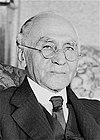
|
Sir Isaac Isaacs GCMG (1855–1948) |
21 January 1931 |
23 January 1936 |
5 years, 2 days | ||
|
Joseph Lyons (1932–1939) | |||||||
|
Edward VIII (1936) | |||||||
| 10 |

|
Brigadier-General Alexander Hore-Ruthven Baron Gowrie VC, GCMG, CB, DSO*, PC (1872–1955) |
23 January 1936 |
30 January 1945 |
9 years, 7 days | ||
|
George VI (1936–1952) | |||||||
|
Earle Page (1939) | |||||||
|
Robert Menzies (1939–1941) | |||||||
|
Arthur Fadden (1941) | |||||||
|
John Curtin (1941–1945) | |||||||
| 11 |

|
Prince Henry Duke of Gloucester KG, KT, KP, GCB, GCMG, GCVO, GCStJ, PC, ADC (1900–1974) |
30 January 1945 |
11 March 1947 |
2 years, 40 days | ||
|
Frank Forde (1945) | |||||||
|
Ben Chifley (1945–1949) | |||||||
| 12 |
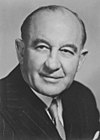
|
Sir William McKell GCMG, PC (1891–1985) |
11 March 1947 |
8 May 1953 |
6 years, 58 days | ||
|
Robert Menzies (1949–1966) | |||||||
|
Elizabeth II (1952–2022) | |||||||
| 13 |

|
Field Marshal Sir William Slim KG, GCB, GCMG, GCVO, GBE, DSO, MC, KStJ (1891–1970) |
8 May 1953 |
2 February 1960 |
6 years, 270 days | ||
| 14 |

|
William Morrison 1st Viscount Dunrossil GCMG, MC, PC, QC (1893–1961) |
2 February 1960 |
3 February 1961 [c] |
1 year, 1 day | ||
| 15 |
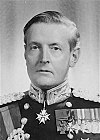
|
William Sidney 1st Viscount De L'Isle VC, GCMG, GCVO, PC (1909–1991) |
3 August 1961 |
7 May 1965 |
3 years, 277 days | ||
| 16 |
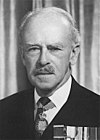
|
Richard Casey Baron Casey KG, GCMG, CH, DSO, MC, PC (1890–1976) |
7 May 1965 |
30 April 1969 |
3 years, 358 days | ||
|
Harold Holt (1966–1967) | |||||||
|
John McEwen (1967–1968) | |||||||
|
John Gorton (1968–1971) | |||||||
| 17 |

|
Sir Paul Hasluck KG, GCMG, GCVO (1905–1993) |
30 April 1969 |
11 July 1974 |
5 years, 72 days | ||
|
William McMahon (1971–1972) | |||||||
|
Gough Whitlam (1972–1975) | |||||||
| 18 |

|
Sir John Kerr AK, GCMG, GCVO, QC (1914–1991) |
11 July 1974 |
8 December 1977 |
3 years, 150 days | ||
|
Malcolm Fraser (1975–1983) | |||||||
| 19 |

|
Sir Zelman Cowen AK, GCMG, GCVO, QC (1919–2011) |
8 December 1977 |
29 July 1982 |
4 years, 233 days | ||
| 20 |

|
Sir Ninian Stephen AK, GCMG, GCVO, KBE, QC (1923–2017) |
29 July 1982 |
16 February 1989 |
6 years, 202 days | ||
|
Bob Hawke (1983–1991) | |||||||
| 21 |
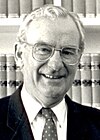
|
Bill Hayden AC (1933–2023) |
16 February 1989 |
16 February 1996 |
7 years | ||
|
Paul Keating (1991–1996) | |||||||
| 22 |

|
Sir William Deane AC, KBE (born 1931) |
16 February 1996 |
29 June 2001 |
5 years, 133 days | ||
|
John Howard (1996–2007) | |||||||
| 23 |

|
Peter Hollingworth AC, OBE (born 1935) |
29 June 2001 |
28 May 2003 [d] |
1 year, 333 days | ||
| 24 |
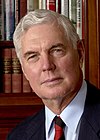
|
Major General Michael Jeffery AC, CVO, MC (1937–2020) |
11 August 2003 |
5 September 2008 |
5 years, 25 days | ||
|
Kevin Rudd (2007–2010) | |||||||
| 25 |

|
Dame Quentin Bryce AD, CVO (born 1942) |
5 September 2008 |
28 March 2014 |
5 years, 204 days | ||
|
Julia Gillard (2010–2013) | |||||||
|
Kevin Rudd (2013) | |||||||
|
Tony Abbott (2013–2015) | |||||||
| 26 |

|
General Sir Peter Cosgrove AK, CVO, MC (born 1947) |
28 March 2014 |
1 July 2019 |
5 years, 95 days | ||
|
Malcolm Turnbull (2015–2018) | |||||||
|
Scott Morrison (2018–2022) | |||||||
| 27 |

|
General David Hurley AC, DSC (born 1953) |
1 July 2019 |
Incumbent | 4 years, 289 days | ||
|
Anthony Albanese (since 2022) | |||||||
|
Charles III (since 2022) | |||||||
| 28 |

|
Sam Mostyn AO (born 1965) |
1 July 2024 |
Designate | −77 days | ||
See also
- History of Australia
- Constitutional history of Australia
- Governors of the Australian states
- British Empire
- Governor-general (links to other countries which have governors-general)
Notes
- ^ Hopetoun left for England on 17 July 1902. Lord Tennyson, the governor of South Australia, was appointed Administrator of the Government until formally taking over the governor-generalship on 9 January 1903.
- ^ Stonehaven left for England on 2 October 1930. Lord Somers, the Governor of Victoria, was appointed Administrator of the Government until Sir Isaac Isaacs took over the governor-generalship on 21 January 1931.
- ^ Dunrossil died in office on 3 February 1961. Sir Dallas Brooks, the governor of Victoria, was appointed Administrator of the Government until Lord De L'Isle took over the governor-generalship on 3 August 1961.
- ^ Hollingworth resigned on 28 May 2003. Sir Guy Green, the governor of Tasmania, was appointed Administrator of the Government until Michael Jeffery took over the governor-generalship on 11 August 2003.
- ^ "The Duke of Kent: Appointment in Australia", The Times (26 October 1938): 14.
- ^ "Marina, a tragic but well-loved Princess". The Sydney Morning Herald. London. 28 August 1968. Retrieved 24 July 2013.
- ^ "Duke of Kent and Australia", The Times (12 September 1939): 6.
- ^ "Australia's New Governor-General". Prime Minister of Australia. 16 December 2018. Retrieved 16 December 2018.
- ^ Karp, Paul; Cox, Lisa (16 December 2018). "David Hurley named next governor general of Australia". The Guardian. Retrieved 16 December 2018.
Further reading
- Christopher Cunneen (1983). Kings' Men: Australia's Governors-General from Hopetoun to Isaacs. Allen and Unwin. ISBN 0-86861-238-3.
- Bill Hayden (1996). Hayden: An Autobiography. Angus & Robertson. ISBN 0-207-18769-X. (pp 515, 519, 548)
External links
- The Office of the Governor-General
- The use of the reserve powers
- A Mirror to the People a 58-minute documentary film on the Office of Governor-General of Australia 1999. Dir: Daryl Dellora. Features Sir William Deane, Sir Zelman Cowen, Sir Ninian Stephen. Special Commendation ATOM Awards.

